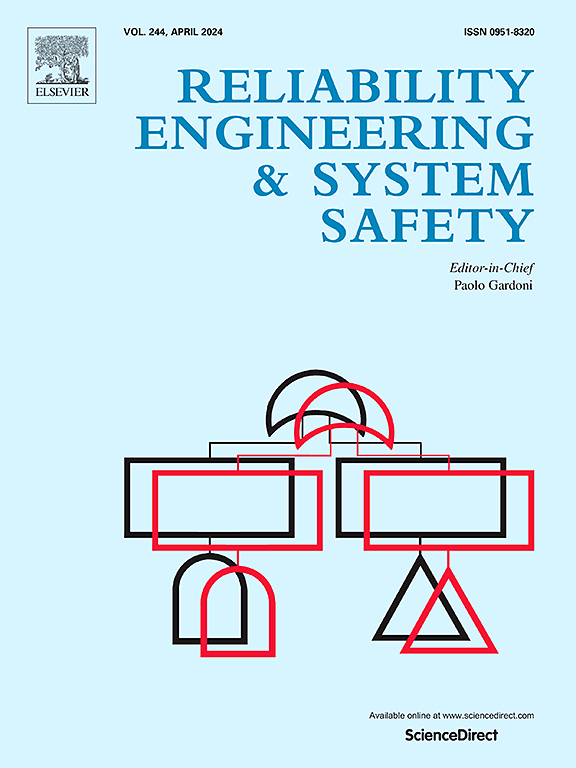A new approach for deep prediction of urban complex system risk process during natural disasters
IF 11
1区 工程技术
Q1 ENGINEERING, INDUSTRIAL
引用次数: 0
Abstract
In recent years, advancements in weather forecasting systems have led to increased accuracy. Despite more accurate disaster input conditions, predicting the risk evolution process of the urban complex system remains an unresolved issue which represents a vulnerable link. Currently, there are numerous methods for risk prediction. However, a universally applicable approach and fundamental model that can dynamically predict the urban risk process under varying disaster input conditions have not been established yet. To address these challenges, we propose an event graph model within the framework of the extended risk concept. Furthermore we introduce the theory of Directed Markov Random Field to construct an Urban Spatio-temporal Risk Process model (USTRP), which enables the dynamic forecasting of risk process. The USTRP model can address basic problems in application such as identifying the most or more probable event chains, calculating the node marginal distribution, and determining the first hitting time under different disaster conditions. Moreover, to improve computational efficiency, we leverage the characteristics of the USTRP and present a sparse low-entropy approximate direct inference algorithm (SLEADIA) while proving its convergence. Finally, we apply this model to a hypothetical case. We analyze the medical service acquisition capabilities of nursing homes and the leakage risks of chemical storage tanks under varying flood conditions, demonstrating the computational efficiency advantage of the proposed SLEADIA.
自然灾害下城市复杂系统风险过程深度预测新方法
近年来,天气预报系统的进步提高了预报的准确性。尽管灾害输入条件更加准确,但城市综合体系统的风险演化过程预测仍是一个有待解决的问题,是一个薄弱环节。目前,风险预测的方法有很多。然而,目前还没有一种普遍适用的方法和基本模型能够动态预测不同灾害输入条件下的城市风险过程。为了解决这些挑战,我们在扩展风险概念的框架内提出了一个事件图模型。在此基础上,引入有向马尔可夫随机场理论,构建了城市时空风险过程模型(USTRP),实现了城市风险过程的动态预测。USTRP模型可以解决在不同灾害条件下识别最可能或更可能的事件链、计算节点边际分布、确定首次命中时间等应用中的基本问题。此外,为了提高计算效率,我们利用USTRP的特点,提出了一种稀疏低熵近似直接推理算法(SLEADIA),并证明了其收敛性。最后,我们将该模型应用于一个假设的案例。我们分析了疗养院的医疗服务获取能力和不同洪水条件下化学品储罐的泄漏风险,证明了所提出的SLEADIA的计算效率优势。
本文章由计算机程序翻译,如有差异,请以英文原文为准。
求助全文
约1分钟内获得全文
求助全文
来源期刊

Reliability Engineering & System Safety
管理科学-工程:工业
CiteScore
15.20
自引率
39.50%
发文量
621
审稿时长
67 days
期刊介绍:
Elsevier publishes Reliability Engineering & System Safety in association with the European Safety and Reliability Association and the Safety Engineering and Risk Analysis Division. The international journal is devoted to developing and applying methods to enhance the safety and reliability of complex technological systems, like nuclear power plants, chemical plants, hazardous waste facilities, space systems, offshore and maritime systems, transportation systems, constructed infrastructure, and manufacturing plants. The journal normally publishes only articles that involve the analysis of substantive problems related to the reliability of complex systems or present techniques and/or theoretical results that have a discernable relationship to the solution of such problems. An important aim is to balance academic material and practical applications.
 求助内容:
求助内容: 应助结果提醒方式:
应助结果提醒方式:


